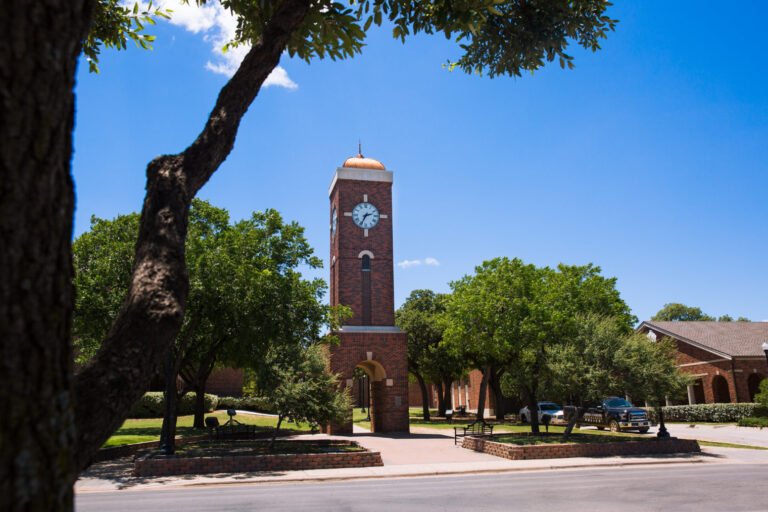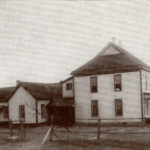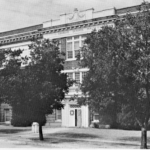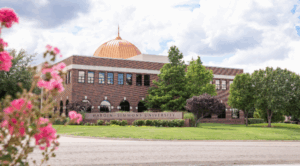A Look Back: the changing face of campus

(ABILENE, Texas)–The coming years at Hardin-Simmons will be filled with renovations and construction, as the university continues to grow. This period of growth, however, is nothing new on the forty-acres. Updates and renovations have occurred on campus since the university’s founding in 1891. As we look forward to exciting new developments at HSU, it’s fun to look back at some memorable construction projects that changed the HSU campus forever.

Valhalla acted as a men’s residence hall, a women’s residence hall, a fine arts building, and even a president’s house.
In the early days of Simmons College, campus was primarily composed of small bachelor shacks where the Simmons boys would live. These shacks were soon replaced with a formal boarding hall that burned down in the mid-1890s. Soon after, a new boys’ boarding hall was constructed, lovingly referred to as Valhalla, which remained a boys’ hall until the 1896-97 school year, when the boys were moved to the old Fine Arts Building and Valhalla and the school kitchen and dining room were joined to become the girls’ home on campus. From the construction of Anna Hall in 1903 to the construction of Cowden Hall 1907, Valhalla was once again a boys’ hall. Valhalla then became the bursar’s office, the Fine Arts Building, and the home of Bursar Paxton. Dr. Tolman purchased the hall and transported it to Hickory Street to house HSU’s department of Latin and Greek. In 1921, Dr. Fry purchased the hall and had it moved to Ambler Avenue, where it once again became a boys’ home.
One of the oldest remaining buildings on campus, Caldwell Hall, underwent delayed renovations in the early 2000s, but the 2003 issue of the Bronco, HSU’s annual yearbook, details the troubled history of the building’s original construction. Around World War I, HSU’s fine arts program was taught out of Anna Hall. Towards the later 1910s, a boom in the number of incoming art students, coupled with the lack of available teaching space, forced HSU to turn away potential students. 1919 brought approval for the construction of a $50,000 Fine Arts Building. Construction officially began after the completion of the new science hall that was erected in 1921. In February of 1922, construction halted due to financial complications just three months before Cowden Hall, the men’s dormitory, burned to the ground. Later that year, the Caldwell family donated $100,000 for the completion of the building, of which’s construction costs had drastically inflated. By January of 1923, Judge C. M. Caldwell was elected president of the Simmons College Board of Trustees and the new hall held its first music classes. The building was soon named after the Caldwell family to show Simmons College’s appreciation for their support.

Built in 1919, the Simmons Science Hall remained in operation until the erection of the Sid Richardson Science Center in the 1960s.
Construction continued steadily through the mid-1900s. In the late 1960s, the Sid Richardson Science Center was completed under President Elwin Skiles to replace the 1919 Simmons Science Hall. The early 1970s brought about more change, as a new President’s House and Mabee Hall ROTC facility were constructed, and the Woodward-Dellis Recital Hall was added to the current music building.
In February of 1993, Football returned to campus with the groundbreaking for the university’s 4,000 seat Shelton Stadium. The stadium was dedicated at the first home football game on September 11, 1993.
Though it’s not a building, another recognizable feature of campus was completed in 2002. The Leggett Unity Bridge that spans the reflection pond underwent its initial construction in the fall of 2001 and then its dedication in May of the following year. The bridge’s name comes from Judge K. K. Leggett, who worked as an attorney in Abilene and was one of the leading founders of Abilene Baptist College, which later became Hardin-Simmons University.


